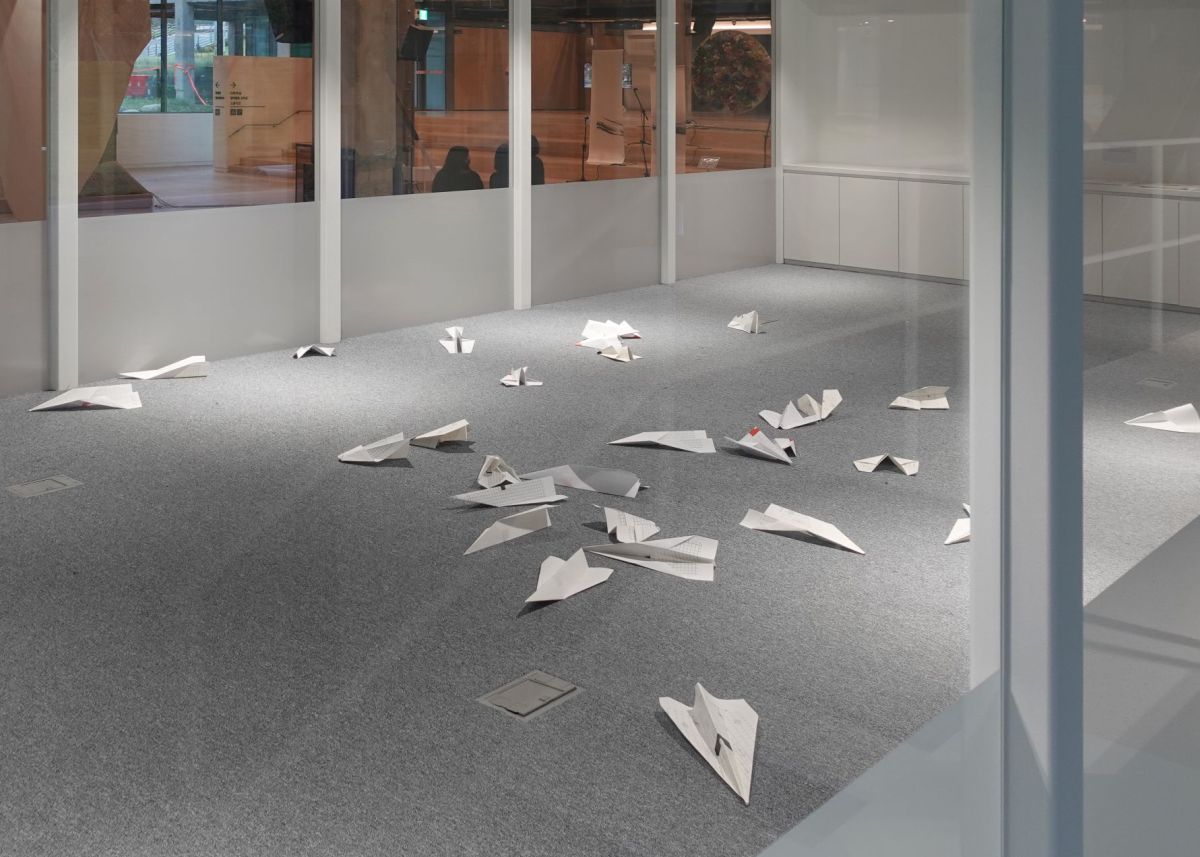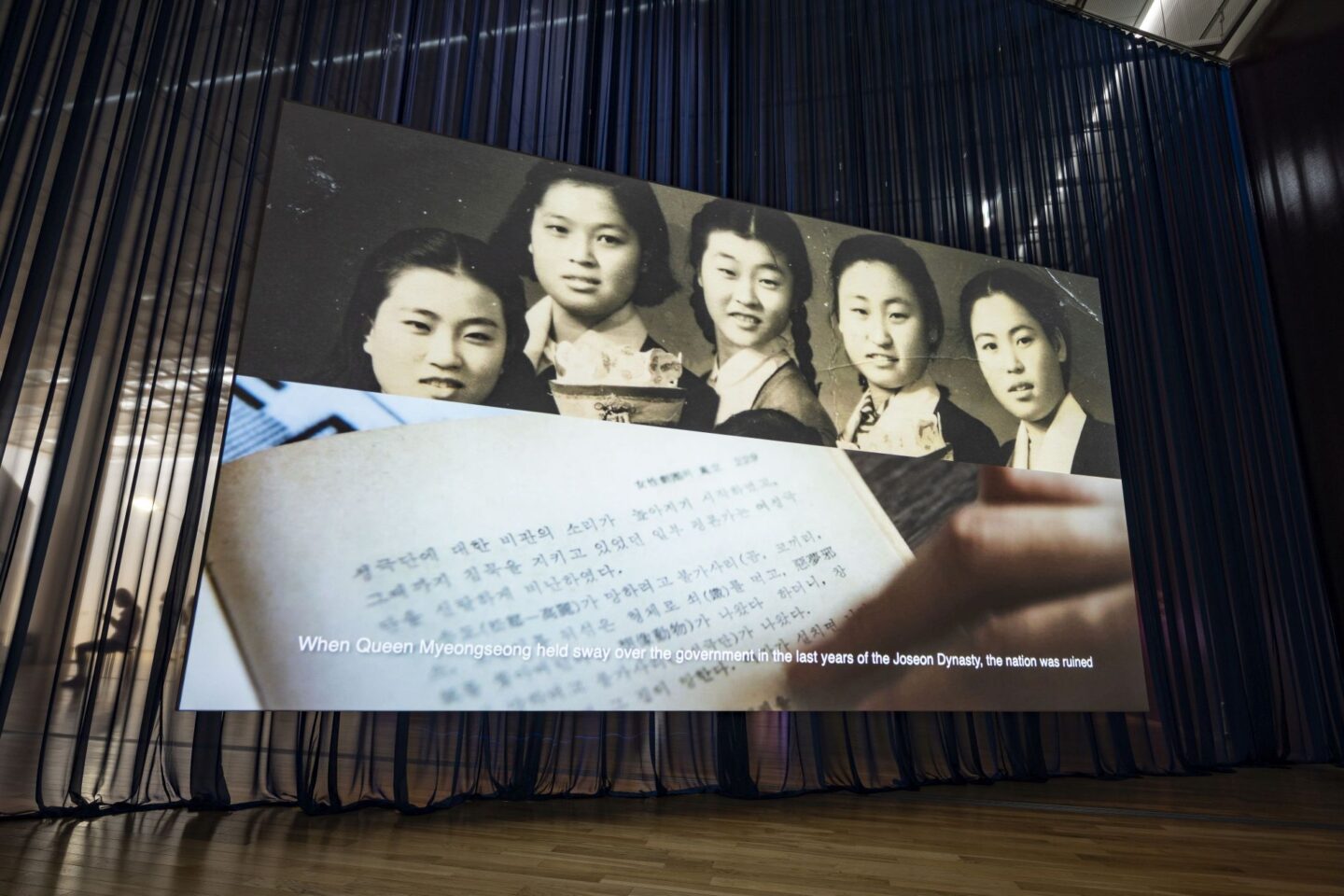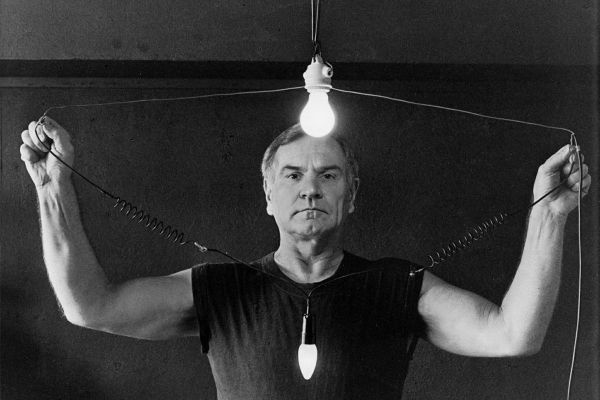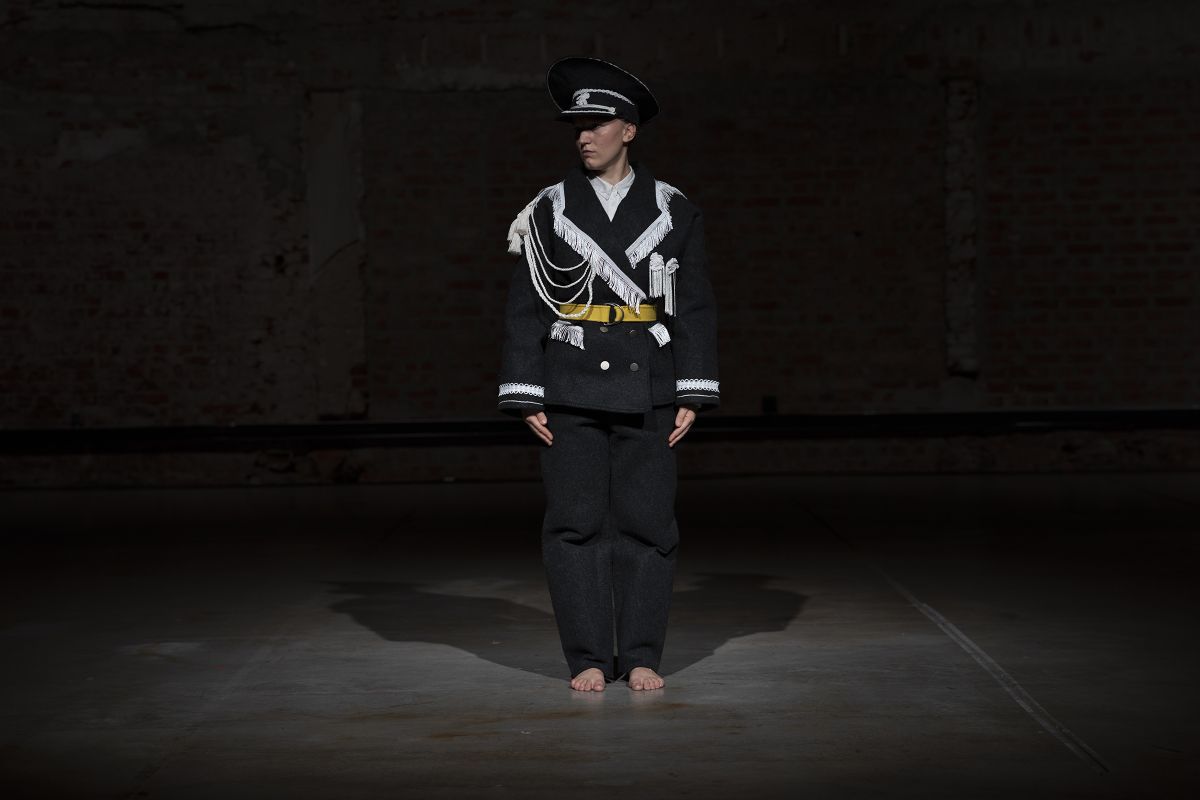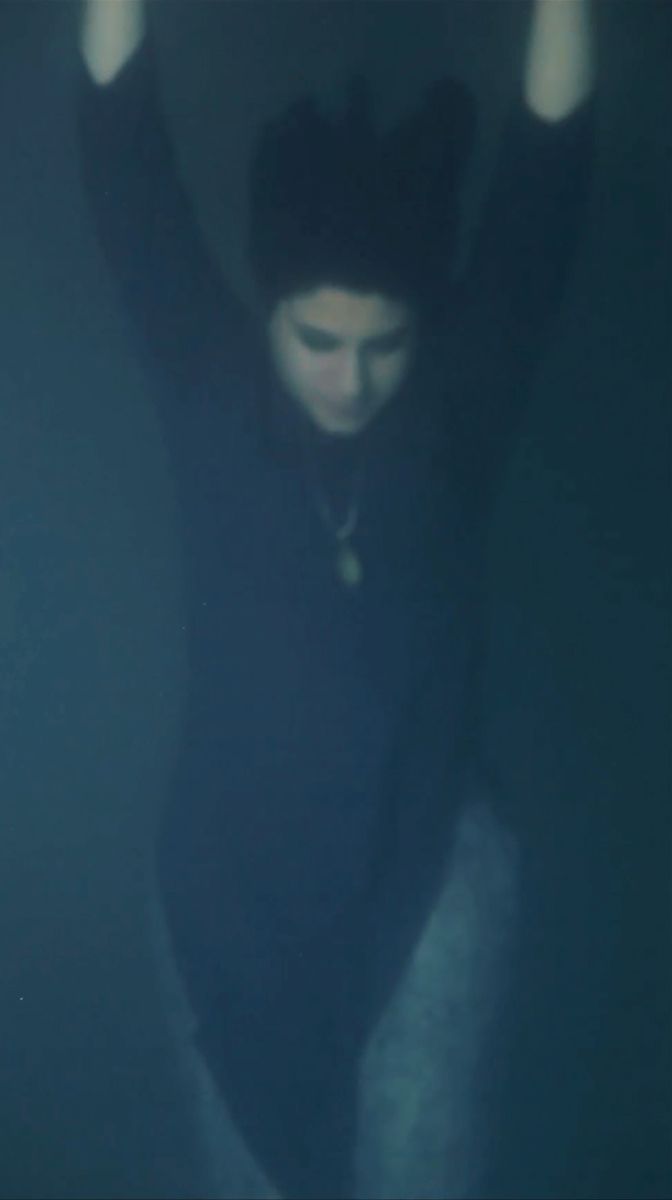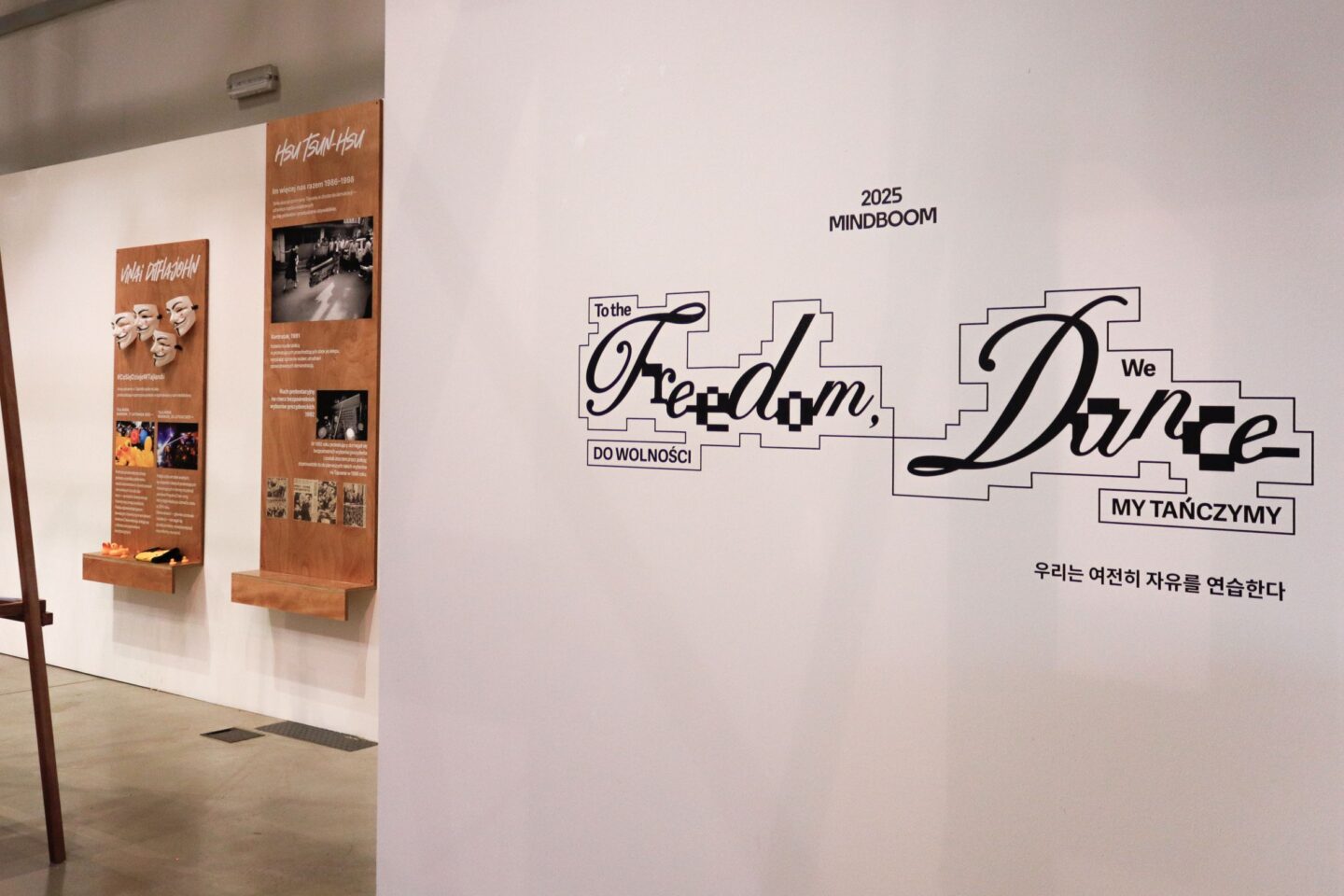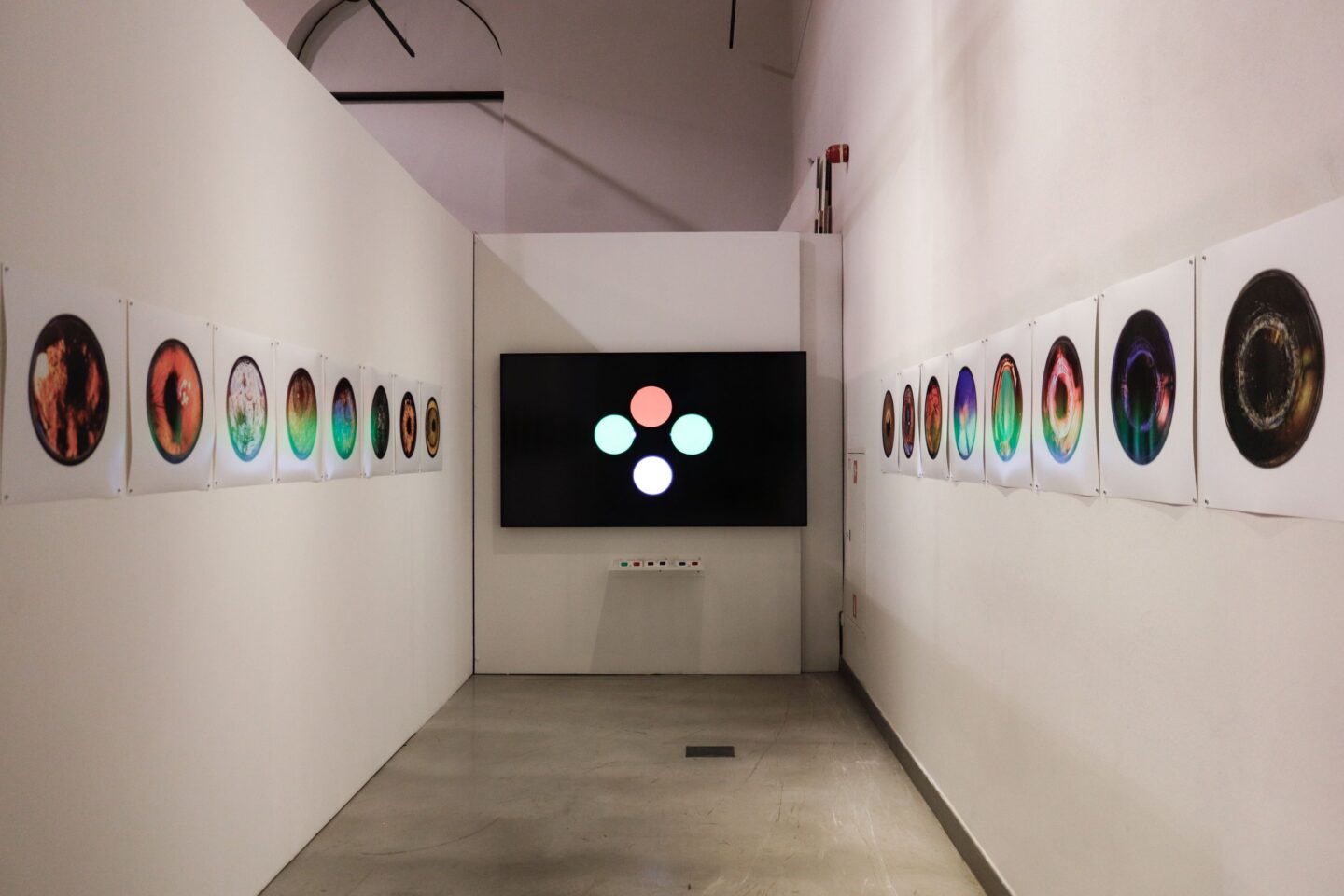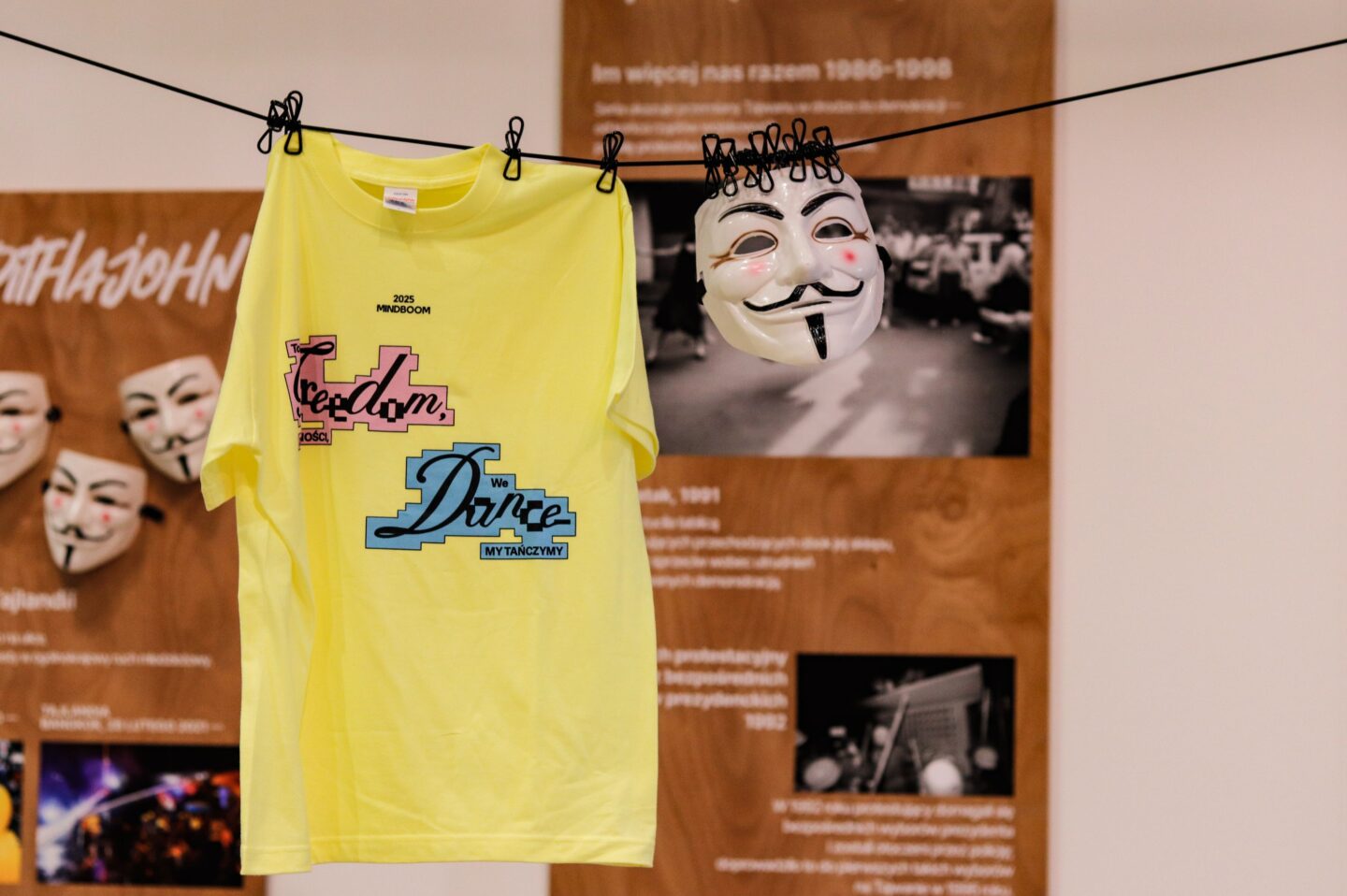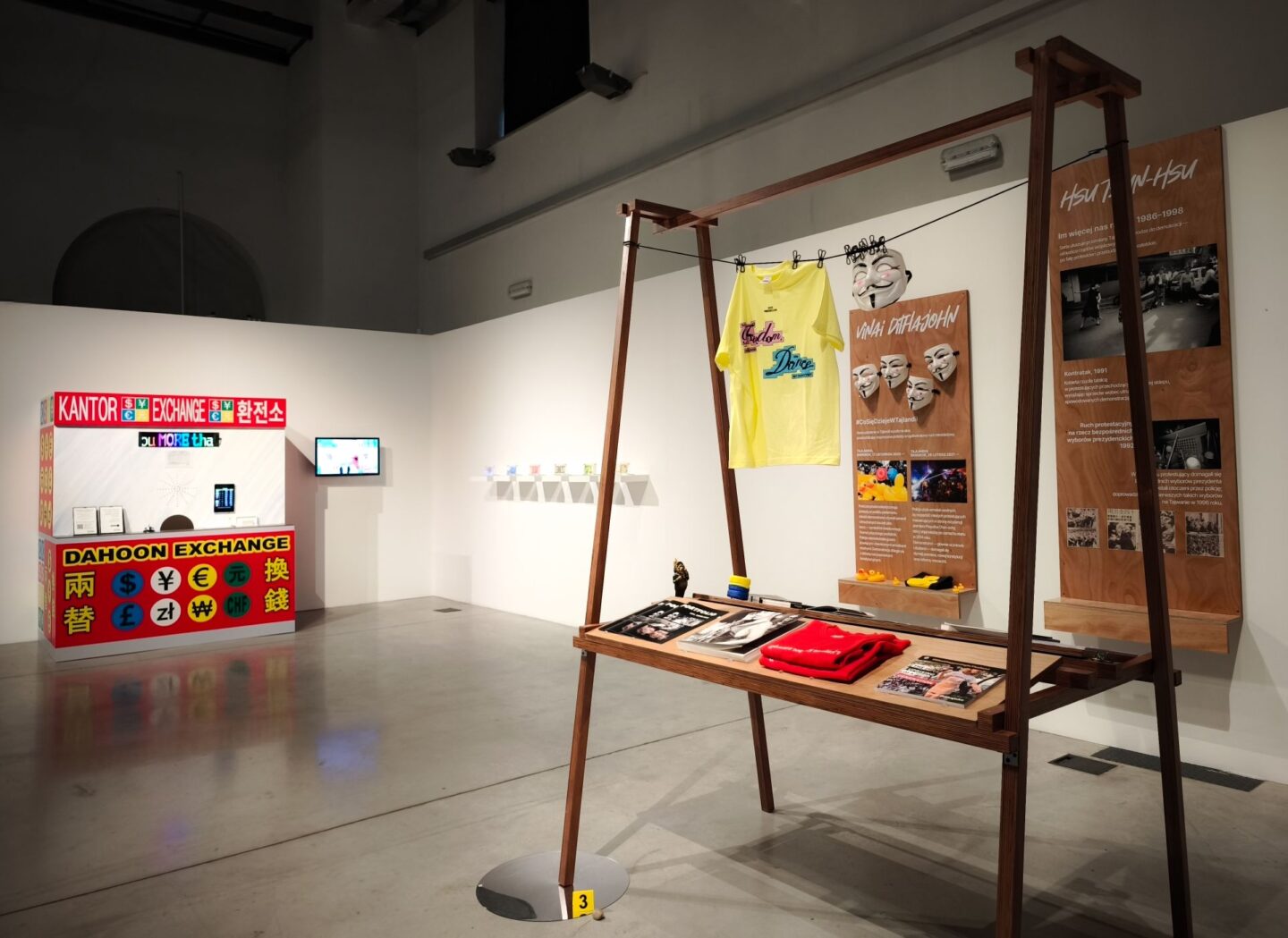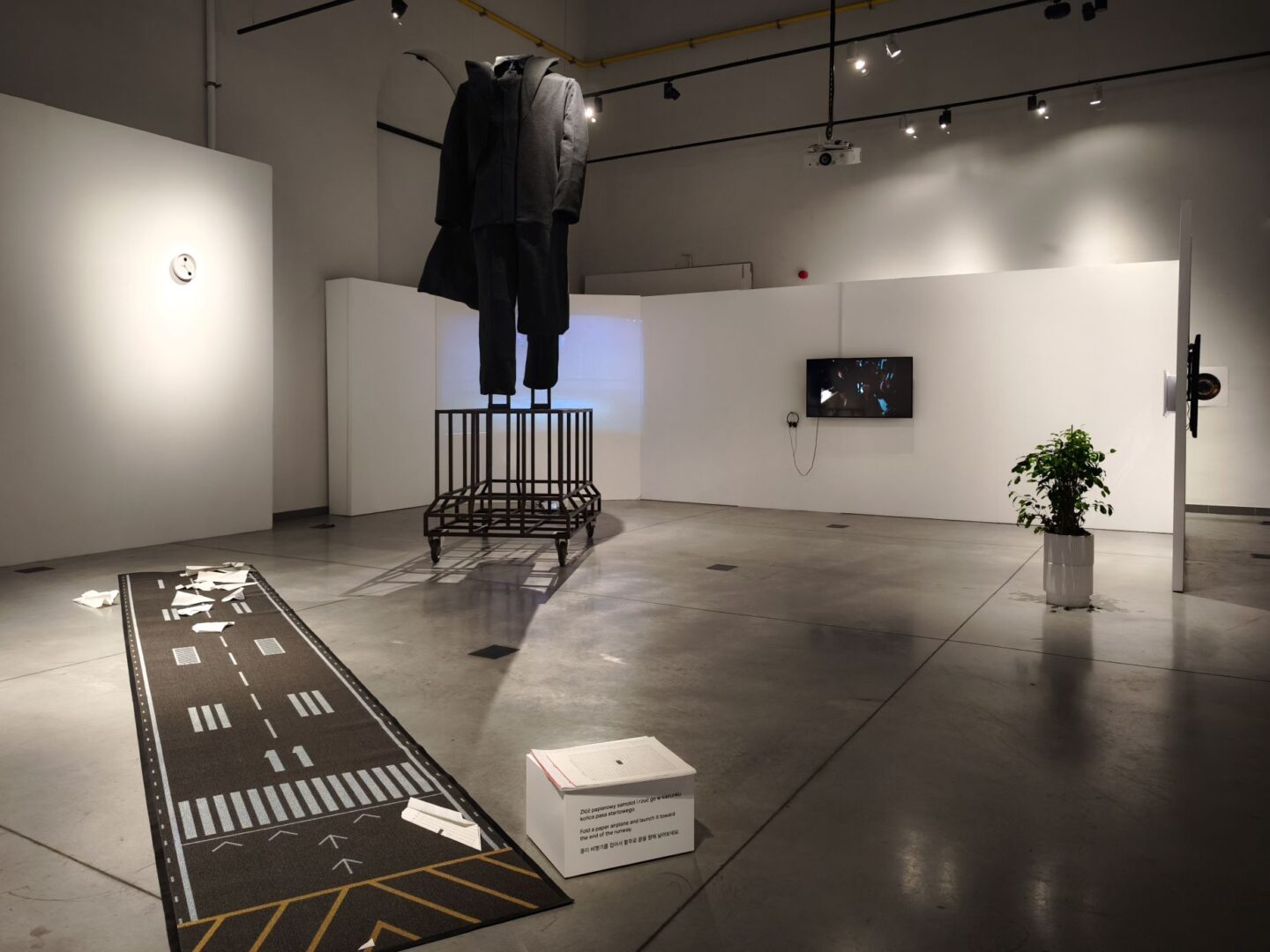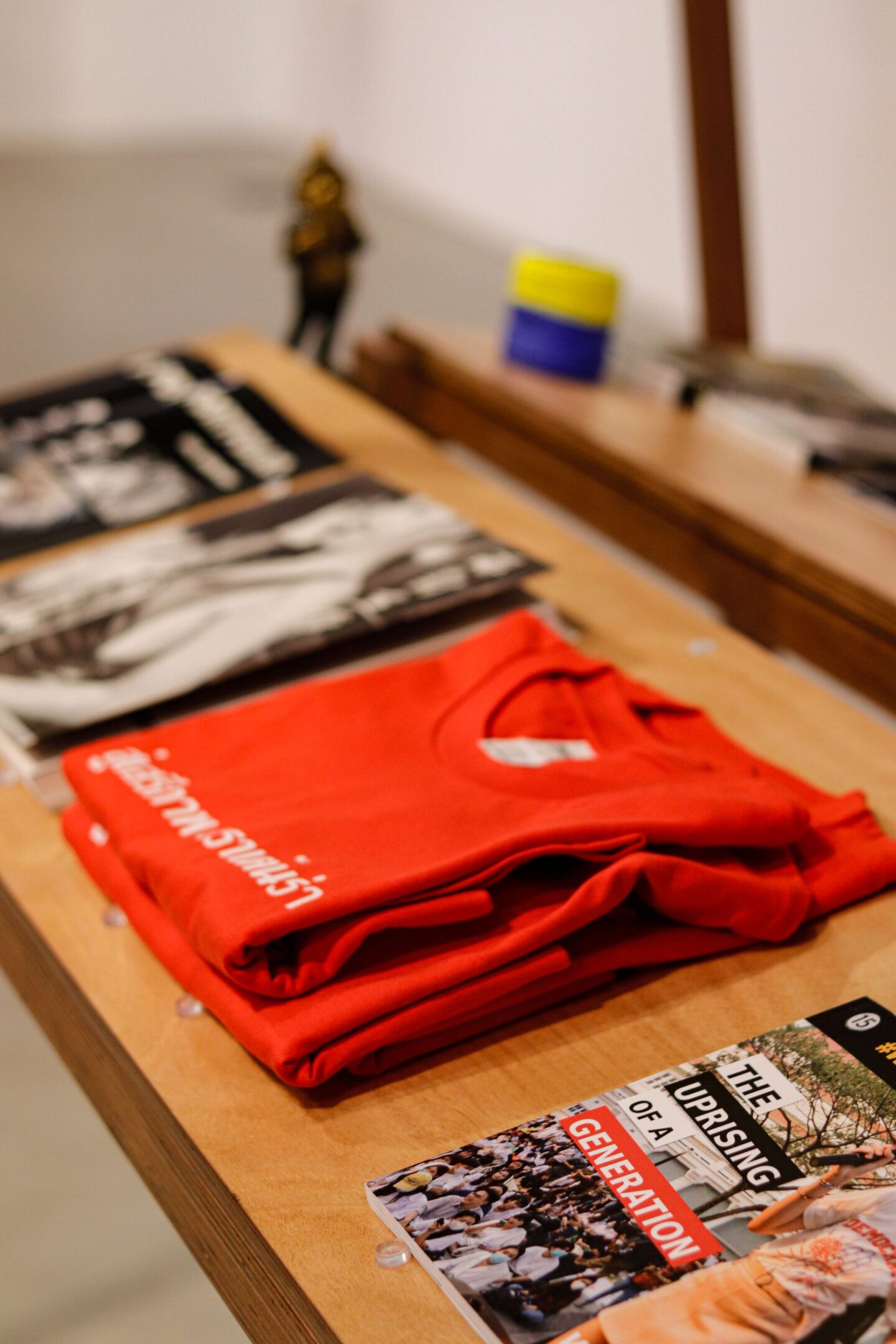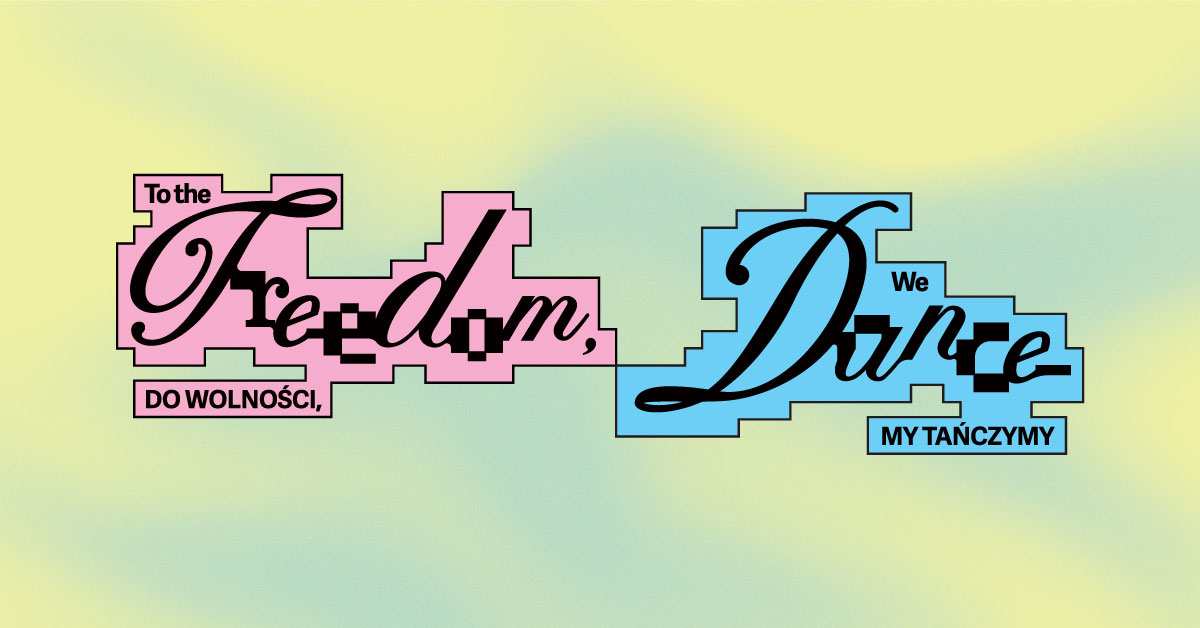
TO THE FREEDOM, WE DANCE
Can we truly say we have attained complete freedom? Even after the end of physical oppression, we continue to live within invisible boundaries shaped by cultural conventions, historical memories, and structures of perception. These boundaries regulate our senses, interrupt our speech, and limit the scope of what we can imagine – often exerting control over the deeper layers of our daily lives as subtly and insidiously as political repression once did.
The exhibition MINDBOOM 2025: To the Freedom, We Dance was created to commemorate two symbolic moments – the 80th anniversary of Korea’s liberation and the 105th anniversary of Victory Day in Poland. Although geographically and historically distinct, each event is part of a global narrative of the desire for freedom and the price that must be paid for it. The exhibition goes beyond the dates themselves though. It explores what freedom is becoming today in a world dominated by invisible forms of control such as social conventions, structures of perception, and cultural traumas. In this context, artists from Asia and Europe have come together, engaging in a shared dance beyond the boundaries of language and geopolitics.
Each artist confronts these boundaries in their own way. Their works challenge the boundaries of familiar systems and venture beyond existing frameworks to explore new ways of thinking.
Through their gestures, we are invited to move with unfamiliar rhythms, speak unspoken languages, sense the imperceptible, and dance toward all that is unsaid, unfelt, and unimaginable.
Ala Savashevich, Dahoon Nam, ENDO Mai x MOMOSE Aya, Igor Wójcik, Jeong Han Kim, Józef Robakowski, Kahee Jeong, LAN Chung-Hsuan, Mozelle, Na Hyun, Shin Il Kim, siren eun young jung, Tooraj Khamenehzadeh, Chronica Disobedientiae (Alexander Chekmenev, @everydayimpunity, Hsu Tsun-Hsu, Vinai Dithajohn).
Location:
Wałbrzyska Galeria Sztuki BWA
Galeria Sztuki Współczesnej
ul. Wysockiego 29
Opening hours:
Monday: closed
Tuesday – Sunday: 10am – 6pm
Organizers:
Global Peace Arts & Culture Foundation (PACF)
Galeria FOTO-GEN
Wałbrzyska Galeria Sztuki BWA
Artistic Director:
Shin Il Kim
Exhibition Director:
Jeauk Kang
Curators:
Haeda Kim
Paweł Bąkowski
Assistant Curator:
Jihoo Kim
Coordinators:
Soyeon Min
Olga Krzywiecka
Ilona Sapka
Translation:
Christa Conklin
Graphic Designer:
Yesin Kim (ID:FORGER)
Public Relations:
Bogyeong Choi
Hyeonjeong Kim
Sosun Na
Supported by:
Miasto Seul, Samorząd Województwa Dolnośląskiego, Miasto Wałbrzych, Pismo Artystyczne Format
Collaborated with:
Mind Design, Mind Ground, Asia Meditation Association
Dahoon Nam (1995)
Artist based in Seoul and Namyangju whose work involves recreating and reinterpreting everyday scenes using a wide range of media—including styrofoam sculptures of various scales, large-scale installations, and computer graphics. Through labor-intensive yet deliberately unrefined repetitive hand-crafted works, he questions the exchange value of labor and capital, and invites viewers to consider how the value of art is constructed and produced in the market.
Nam studied art history in Toronto, Canada. His major solo exhibitions include National Junkyard of Modern and Contemporary Art (Atelier Aki, Seoul, 2025), MoMA from TEMU (Space Hwangumhyang, Seoul, 2024), and The Adult Empire Strikes Back (Gallery Watermark, Seoul, 2024). He has participated in numerous group exhibitions, including For All: Chocolate, Lemonade, and Party (Suwon Museum of Art, Suwon, 2025) and Protect Me From What I Want (Seoul National University Museum of Art, Seoul, 2024). Currently, he is engaged in projects with institutions such as the Amorepacific Foundation and Industrial Bank of Korea, which aim to bridge the gap between art and everyday life.
Kahee Jeong (1986)
Aartist based in Berlin, Amsterdam, and Seoul. Her work visualizes human cognitive processes through research that spans neuroscience, philosophy, and digital ecosystems. Using multimedia formats such as video, text, and installation, she explores psychological ruptures experienced by individuals struggling to adapt to rapidly changing societies, as well as emotional structures like “unwanted thoughts.” Her practice incorporates multidisciplinary collaboration, interviews, and diverse research methodologies to build both theoretical depth and sensory expression.
She has participated in artist residencies at the Rijksakademie van beeldende kunsten (Netherlands), and the MMCA Goyang Residency (South Korea). Her work has been exhibited internationally at venues, including Transmediale Vorspiel (Germany), Taipei Video Art Festival (Taiwan), the Philosophy Festival (Italy), and the Science Gallery (UK), among others.
Jeonghan Kim (1971)
Media artist based in Seoul whose work explores perception, qualia, and collective affect at the intersection of art and cognitive science. He has investigated the possibility of perceiving others’ perceptions through what he terms “hybrid perception” and has developed data-driven visualization projects such as the EMC (Emergen Mind of City) series, which has been exhibited internationally at venues including Infosphere (ZKM, Germany), Media City Seoul, and WhiteBox (New York City). He received his BFA and MFA in Western Painting from Seoul National University and later studied New Media at the School of the Art Institute of Chicago. He earned a Ph.D. in Cognitive Science from Seoul National University, where he focused on interdisciplinary research combining media art and cognitive science. With support from the Asian Cultural Council under the Rockefeller Brothers Fund, he participated in a residency at the Lower Manhattan Cultural Council (LMCC) in New York. He also conducted collaborative research on media art and cognitive science as a Fulbright Visiting Scholar at DXARTS, University of Washington in Seattle.
siren eun young jung (1974)
A Seoul-based artist whose multidisciplinary practice encompasses visual art, film, and performance. Her work explores how individual desires can be transformed into acts of resistance, historical discourse, and political expression.
Her representative projects include the Dongducheon Project, Gyeonggi-do (2007–2009), and ongoing Yeoseong Gukgeuk (Korean classical opera of women) Project (2008–present). She is the recipient of the 2013 Hermes Foundation Art Award, the 2015 Sindoh Art Prize, and the 2018 Korea Artist Prize. Major solo exhibitions include Deferral Theatre (Kunstverein für die Rheinlande und Westfalen, Düsseldorf, 2020) and Hijeck the Gender! (Leonard & Bina Ellen Art Gallery, Montrea, 2023). In 2019, she participated in the Korean Pavilion at the 58th Venice Biennale.
Mozelle (1996)
Seoul-based artist whose paintings and installations reveal subtle acts of mischief embedded in the routines of daily life. She has participated in numerous group exhibitions, including Dot, Dot, Dot (Miindo Cultural Space, Seoul, 2018) and Beyond the Gaze (Gallery Cove, Seoul, 2025). Most recently, she presented a solo exhibition Out of My Mind at Barom Gallery in Seoul (2025). Her work is part of the collection at Biseonjae Gallery, also located in Seoul.
Shin Il Kim (1971)
Seoul-based artist whose practice centers on text-based sculpture, exploring the limits of human perception and the categorization of language. Based in Seoul,
He was nominated for the 2014 Korea Artist Prize at the National Museum of Modern and Contemporary Art (MMCA), and has participated in numerous international biennials, including the 3rd Seville International Biennale (2008), the 5th Seoul International Media Art Biennale (2008), the Portland Biennial (2005), and the Singapore Biennale (2006).
His works are included in the collections of major institutions such as the New Museum and Queens Museum in New York, as well as MMCA, the Seoul Museum of Art, and Leeum Museum of Art in Korea. Since 2021, he has also served as the artistic director of the Mindboom Festival.
Na Hyun (1970)
Seoul-based artist whose practice engages with historical events and archival records. By constructing alternative archives and imaginatively filling in the gaps left by official records, he questions the truth claims embedded in seemingly objective documentation. He won the Seoul Arts Award in 2025 and was nominated for the Korea Artist Prize by the National Museum of Modern and Contemporary Art (MMCA). He has held solo exhibitions at venues such as Finding Bigfoot (Oil tank Cultural park, Seoul, 2022), Babel – Different Tongues (Daegu Art Museum, Daegu, 2018), and Babel Tower (Künstlerhaus Bethanien, Berlin, 2014), and his works are included in the collections of major institutions in Korea such as the National Museum of Modern and Contemporary Art, Seoul Museum of Art, Gyeonggi Museum of Modern Art, and Suwon Museum of Art.
LAN Chung-Husan (1991)
Taipei-based artist whose work centers on the violence of war and politics. Through photography, readymades, and installation, he exposes the inherent absurdities embedded in these systems. Since participating in Babylone – U.S.A.(The Boiler, New York, 2016), he has presented his work internationally, including at the Suwon International Photo Festival (Suwon, 2022), and the 10th Asia-Europe Mediations Biennale (Istanbul, 2023). He has received numerous awards, including Arte Laguna Prize (2022) and TDCC Contemporary Art Award (2020)
Tooraj Khamenehzadeh
Iranian-born artist based in New York. He began his artistic practice in theater before transitioning to photography and video art. His current work centers on photography and image-based projects, occasionally incorporating elements from his background in theater.
His work has been featured in festivals, exhibitions, biennials, and art fairs around the world, including the 4th Jeju Biennale (South Korea), Iran Photo Biennial (Iran), Polyforme Video Art Festival (France), Chongqing Photo and Video Biennale (China), the International Art Festival (Nepal), Now&After Video Art Festival (Russia), Milan Image Art Fair (Italy), and Photo London (UK). He has also participated in numerous international exchange programs and artist residencies, including Theertha (Sri Lanka), Khoj (India), SaNsA (Ghana), Vasl (Pakistan), and Organhaus (China).
MOMOSE Aya (1988)
Tokyo-based artist whose practice questions gender and sexuality through performance and video. From issues of gaze and desire to the discomforts that arise between one’s own body and that of the other, she explores the complex structures of communication between one’s own body and another presence.
She has held numerous solo exhibitions, including 10 Years (TALION Gallery, Tokyo, 2024) and My Open Seam (Kurume City Plaza, Fukuoka, 2023). Her work has also been shown internationally in group exhibitions such as Elle empêche les choses de dormir (40mcube, Montpellier, 2025) and Bodies in Connection: Women Artists from Asia (National Museum of Modern and Contemporary Art, Seoul, 2024).
ENDO Mai (1984)
Tokyo-based artist and actor whose practice spans video, photography, theater, and publishing. Known for her distinctive use of humor, she engages with a wide range of subjects—including historical folktales, fan fiction, teen comics, the institution of marriage, and laws that regulate freedom of expression—as part of her ongoing inquiry into queer feminist thought.
She has held numerous solo exhibitions, including Actuality on the Rooftop (Tav Gallery, Tokyo, 2023) and Attractively Idling (Tokyo Dome City, 2023). Her work has also been featured internationally in group exhibitions such as Bodies in Connection: Women Artists from Asia (National Museum of Modern and Contemporary Art, Seoul, 2024) and La Clausura del Cuerpo (Las Cigarreras Centro Cultural, Alicante, 2022).
Alexander Chekmenev (1969)
Kyiv-based photographer whose practice centers on documenting the social and political turbulence that has shaped contemporary Ukraine. He began his career as an apprentice at a photo studio in his hometown of Luhansk, before taking to the streets with his camera in search of his own visual style. Through this proactive approach, he has captured critical moments of social upheaval and political unrest across Ukraine. To this day, he continues to document the transformations and challenges faced by Ukraine and its people in times of war and revolution. His lens bears witness to the everyday realities and resilience of those affected by systemic collapse and conflict.
His work has been featured in numerous international publications, including The New York Times, TIME Magazine, TIME LightBox, New Yorker (Photo Booth), Quartz Magazine, The Guardian, Vice Magazine, WIRED Magazine and The Atlantic Magazine, The Times Magazine and The Sunday Times.
@everydayImpunity
Team members: Ezra Acayan, Jes Aznar, Kimberly dela Cruz, Raffy Lerma
@everydayImpunity is a non-profit collective composed of documentary photographers, journalists, and visual artists who use photography to challenge stereotypes and systemic inequality. The collective offers a platform for photographers around the world to share their work, collaborate, and grow together.
Photographs from the @everydayImpunity have been consistently featured in global media outlets and exhibited in numerous international galleries and photography festivals.
At MINDBOOM 2025, the work of Jes Aznar, the representative of this community, will be presented.
Hsu Tsun-Hsu (1960)
Taipei-based artist who began his career as a photojournalist at the China Times in 1988, the year after martial law was lifted in Taiwan. For 18 years, he documented the country’s turbulent social transformations and the rise of its democratization.
One of his most notable series, The More We Get Together, reflects on social injustices through his sharply observant and insightful perspective. The series was presented at the 2023 Taipei Biennial.
Vinai Dithajohn
Bangkok-based photojournalist and documentary photographer. For over 30 years, he has documented social, political, and human rights issues across Southeast Asia. His work has appeared in Time, International Herald Tribune, South China Morning Post, GQ Thailand, and National Geographic (Thailand and Netherlands editions). He has collaborated with international organizations including UNAIDS, UNDP, ILO, the Rockefeller Foundation, Amnesty International, and Greenpeace Southeast Asia. Vinai has received awards from the Foreign Correspondents’ Club of Thailand (FCCT) and National Geographic Thailand.
Igor Wójcik (1968)
Visual artist, originator of the concept of phenomenological art and intuitional speculation. He works in painting, photography, artistic glass, installation, performance, happening, and film. Author of the series: Mechabiotylae (since 1992), Postindustrium (1994–2002) and Miejsce wybiera (Place of Choice) (1998–2006).
He was a member of the artistic groups Karuzela Braders (Carousel Braders), Gabinet Operacji Plastycznych i Odnowy Uczuć (The Office of Plastic Surgery and Emotional Renewal), and the musical collective Poławiacze Pereł z Odry (Pearl Divers of the Oder). He is currently active in the creative group Silesium. His works can be found in museums and private collections in Poland, Germany, the Czech Republic, Ukraine, Italy, Switzerland, Belgium, Norway, Canada, and the USA.
Józef Robakowski (1939)
Multimedia artist, experimental filmmaker, performer, art theoretician, and educator. This artist is one of the key figures of Polish avant-garde art after 1960. His practice includes film, video, photography, performance, and installation. Robakowski consistently explores the boundaries of perception, medium, and corporeality, often using his own body as an experimental tool.
Co-founder and member of such artistic groups as Film Form Workshop (Warsztat Formy Filmowej) in the city of Łódź, ZERO-61 Group in Toruń, and the Exchange Gallery (Galeria Wymiany) in Łódź.
His work is characterized by an individual approach to the medium, self-analysis, and subversive humor. Many of his works are commentaries on the relations between art and technology, private and public, individual and system.
Ala Savashevich (1989)
She graduated from the Belarusian State Academy of Fine Arts (Minsk, 2010-2014) and the Eugeniusz Geppert Academy of Fine Arts (Wrocław, 2014-2017). In 2021, she completed postgraduate studies at the Jan Matejko Academy of Fine Arts in Krakow. She works in installation, photography, video, and performance art. Savashevich has participated in exhibitions in Belarus, Poland, Ukraine, Germany, and Georgia, amongst others. She currently lives and works in Wrocław, Poland.
In her artistic practice, Ala Savashevich engages in a critical dialogue with the collective memory of the Soviet past. Her work – focused on textiles, clothing, and performance – explores the complex relationships between material and ideology, the body and power, touch and memory. The artist pays special attention to monuments and the concept of “monumentality” as tools of political influence. She analyses their role in the Soviet era, their transformation in the post-Soviet context, and the transformation of their form and meaning in contemporary space.



